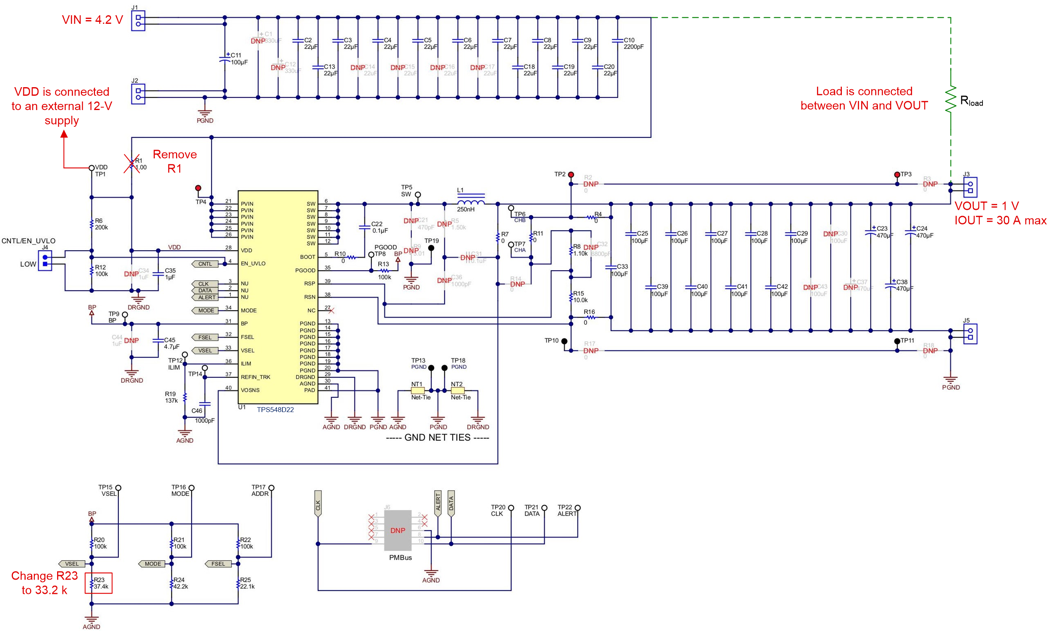SLUAA69 July 2020 – MONTH TPS548D22
5 TI Solution
Taking 220 W power supply with hiccup mode as an example, the buck converter is designed for 1-V 30-A output at 4.2-V input. For the component parameters design, it was shown in Principle of Synchronous Buck with Sinking Current Application that sourcing current and sinking current use of a synchronous buck converter have the same power stage (except for the input capacitor), as well as design methods and formulas. Fortunately, TPS548D22EVM-784 provides a fixed 1-V output at up to 40 A from a 12-V input bus. It is possible to use it to verify this common-anode power solution with just some minor changes as shown in Figure 5-1.
The first change is the VDD supply voltage. Note that the VDD UVLO rising threshold of TPS548D22 is typically 4.25 V. With 4.2-V input connecting to VDD, the device will be in UVLO state and cannot start. A boost circuit or an external power supply of 12 V should be used to make sure the device is properly powered and enabled. The second change is the resistor divider network of reference voltage. The EVM is set in latch-off mode. So, Rsel (R23 in EVM) should be changed to 33.2 kΩ for hiccup mode. The hiccup time is 16 ms (with 1 ms soft-start option).
 Figure 5-1 Schematic of TPS548D22 with Sinking
Current Application
Figure 5-1 Schematic of TPS548D22 with Sinking
Current ApplicationBench Test and Result analyzes start-up behaviors of this synchronous buck converter with sinking current application based on bench test waveforms. Also, a lazy loading solution, which means to start up with no load and then add the load after start up is complete, will be analyzed.